 That is, the square of the sum of two quantities is equal to the square of the first, plus twice the product of the first by the second, plus the square of the second. That is, the square of the sum of two quantities is equal to the square of the first, plus twice the product of the first by the second, plus the square of the second.  Grammar-school arithmetic - Page 551by John Henry Walsh - 1898Full view Grammar-school arithmetic - Page 551by John Henry Walsh - 1898Full view - About this book
 | Joseph Ray - Algebra - 1852 - 408 pages
...following theorems, which may be regarded as the simplest application of Algebra. ART. 78. THEOREM I. — The square of the sum of two quantities is equal to the square of the first, plus twice the product of the first by the second, plus the square of the second. Let a represent one... | |
 | New York (State) School for the deaf, White Plains - 1854 - 936 pages
...gives minus." (b-— 1)=! (If— 1)=(&6— &s)." What is the square of the sum of two quantities T " The square of the sum of two quantities is equal to the square of the first, plus twice the product of the first by the second, plus the square of the second." (la— 5Z>)S= what!... | |
 | James William M'Gauley - 1854 - 284 pages
...algebraic formula [sec. 1, 1], — For, the result of the multiplication may be read as follows : — " the square of the sum of two quantities is equal to the sum of their squares, plus twice their product." And as the given quantities may represent any possible... | |
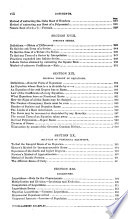 | Elias Loomis - Algebra - 1855 - 356 pages
...Required the square of 3+2 v/5. These two examples are comprehended under the rule in Art. 60, that the square of the sum of two quantities is equal to the square of the first, plus twice the product of the first by the second, plus the square of the second. Ex. 3. Required the... | |
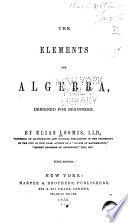 | Elias Loomis - Algebra - 1856 - 280 pages
...theorems are of such extensive application that they should be carefully committed to memory. THEOREM I. The square of the sum of two quantities is equal to the square of the first, plus twice the product oj the first by the second, plus the square of the second. Thus, if we multiply... | |
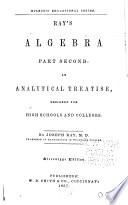 | Joseph Ray - Algebra - 1857 - 408 pages
...following theorems, which may be regarded as the simplest application of Algebra. ART. 78. THEOREM I. — The square of the sum of two quantities is equal to the square of the first, plus twice the product of the first by the second, plus the square of the second. Let a represent one... | |
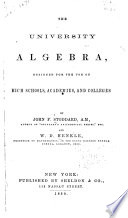 | John Fair Stoddard, William Downs Henkle - Algebra - 1859 - 538 pages
...+ Зааг* —х". .dn«. a'— 2ax+x\ CHAPTER III. THEOREMS AND FACTORING. 0 THEOREM I. ( 1 09.) The square of the sum of two quantities is equal to the square of the first, plus twice the product of the first by the second, plus the square of the second. • DEMONSTBATION.... | |
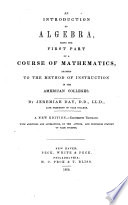 | Jeremiah Day - Algebra - 1859 - 422 pages
...certain cases in Multiplication of frequent occurrence, and should be carefully learned. THEOREM I. The square of the Sum of two quantities is equal to the square of the first, plus twice the product of the first and second, plus the square of the second. This may be expressed... | |
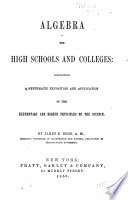 | James B. Dodd - Algebra - 1859 - 368 pages
...of (a+x) (a— a) 1 What is the Product of (a+5) (a— 5) 1 Of (3+y) (3— y)1 Of (x— 1) (a (59.) The Square of the sum of two quantities is equal to the sum of the squares plus twice the product of the two quantities. Thus (a+b) (a+b), that is, the square... | |
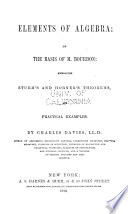 | Charles Davies - Algebra - 1860 - 412 pages
...+ b) X (a + b), or performing the multiplication indicated, (a + b)z = <£• + 2ab + 62 ; that is, The square of the sum of two quantities is equal to the square of the first, plus twice the product of the first by the second, plus the square of the second. To apply this formula... | |
| |